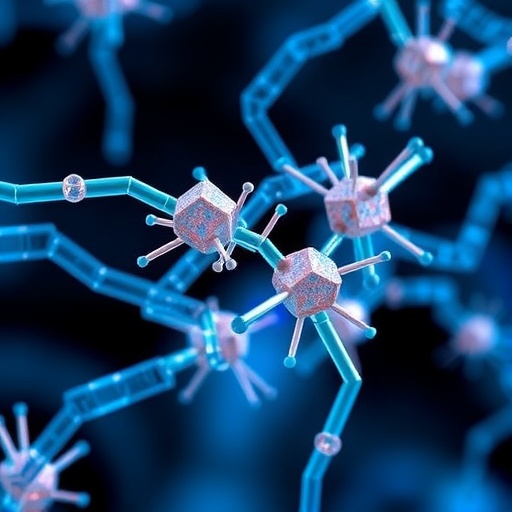In an era when antibiotic pollution poses an escalating threat to ecosystems and human health, a revolutionary breakthrough from South China Agricultural University promises a powerful new weapon against environmental contamination. Researchers have unveiled an innovative synthetic biology platform named FerTiG, engineered specifically to target and degrade tetracycline antibiotics, one of the most pervasive pharmaceutical pollutants in aquatic environments worldwide. This advancement marks a significant stride in combining biotechnology with environmental remediation, offering hope for protecting water bodies from the persistent and hazardous residues of antibiotic agents.
Antibiotics like tetracyclines enter water systems through numerous pathways, including agricultural runoff, pharmaceutical manufacturing effluents, and improper disposal of medications. Such contamination not only jeopardizes aquatic life but also accelerates the global crisis of antibiotic resistance by fostering resistant microbial strains. Traditional treatment methods often fall short, given their limited capacity to completely break down these complex molecules. The introduction of FerTiG, with its unique modular enzyme design, addresses this gap by acting as a highly efficient biological catalyst capable of degrading tetracycline molecules under diverse environmental conditions.
What sets FerTiG apart is its ingenious integration of multiple functional modules into a single enzyme assembly. This multicomponent design optimizes the enzyme’s structural stability and catalytic proficiency, enhancing its performance beyond conventional single-enzyme systems. By constructing a synthetic platform that mimics natural enzyme complexes but with enhanced functionality, the research team has tapped into the potential of synthetic biology to redefine how environmental detoxification processes can be engineered and optimized at a molecular level.
The research delves deeply into the mechanistic underpinnings of FerTiG’s functionality. The platform employs a fusion of enzymatic domains, each tailored to recognize and metabolize specific chemical bonds found in tetracycline molecules. This domain synergy allows the platform not only to bind tetracycline with high affinity but also to catalyze sequential chemical reactions that ultimately disassemble the antibiotic into harmless byproducts. The biochemical harmony engineered into FerTiG is a testament to the precision available through genetic and protein engineering techniques.
Moreover, extensive characterization of FerTiG’s stability under varying environmental parameters reveals its robustness. Unlike many enzymes that denature or lose activity in fluctuating pH, temperature, or salinity levels, FerTiG maintains catalytic function across a broad spectrum of conditions. This durability is paramount for real-world applications where water matrices can differ dramatically in composition, ranging from freshwater lakes to brackish estuaries. The ability to retain enzymatic activity in situ without requiring stringent control measures elevates FerTiG’s practicability for large-scale environmental deployment.
Beyond laboratory settings, the platform has been rigorously tested in multiple water sources, including surface water and wastewater samples, simulating realistic scenarios of contamination. These empirical assessments demonstrate that FerTiG consistently reduces tetracycline concentrations to levels below detection thresholds, outperforming existing biodegradation methods. Additionally, the kinetic parameters measured affirm rapid reaction rates, thus shortening the remediation window and enabling swift intervention in polluted ecosystems.
One of the most compelling facets of this research is the comprehensive biosafety evaluation undertaken by the team. Ecotoxicological assays involving aquatic organisms confirmed that the degradation products resulting from FerTiG activity exert no adverse effects on non-target biota. Parallel in vivo studies further corroborated the biosafety of both the enzyme and its metabolites, assuaging concerns regarding potential toxicity or bioaccumulation in organisms higher up the food chain. This holistic safety validation is crucial for regulatory acceptance and public trust in synthetic biology applications geared toward environmental health.
The modular framework of FerTiG also offers promising avenues for customization and scalability. The underlying synthetic biology principles allow researchers to tailor enzyme assemblies for other antibiotics or pollutants by swapping or modifying functional modules. This plug-and-play characteristic could revolutionize environmental biotechnology, transforming it from reactive cleanup into proactive, targeted pollution management. Given the breadth of antibiotic contaminants globally, such adaptable platforms could become cornerstone tools for safeguarding diverse ecosystems.
Integration of FerTiG into existing water treatment infrastructures may be straightforward, thanks to its operational stability and high efficiency. Potential implementations include embedding the enzyme within filtration membranes, bioreactors, or even direct application in contaminated water bodies. The relatively low energy requirements compared to physicochemical methods align with sustainable environmental management paradigms, reducing the carbon footprint associated with pollution abatement strategies.
The development of FerTiG also highlights the power and responsibility inherent in synthetic biology. Engineering biological systems with enhanced capabilities must be paired with stringent evaluation and control to avoid unintended ecological consequences. The South China Agricultural University team’s emphasis on biosafety exemplifies a model approach, balancing innovation with environmental stewardship.
This breakthrough opens doors to a future where molecularly designed enzymes serve as frontline defenders against anthropogenic pollutants. Antibiotic pollution has long been a stubborn and insidious problem, and FerTiG injects new optimism into the global effort to mitigate its impact. As interdisciplinary collaborations continue to push boundaries, the marriage of synthetic biology and environmental science will likely yield even more sophisticated tools for preserving planetary health.
Further research will undoubtedly explore broadening the substrate range of FerTiG-derived platforms, improving catalytic turnover numbers, and integrating sensor technology for real-time monitoring of antibiotic residues. Coupling biodegradation with detection promises dynamic and responsive water quality management systems. The interplay between these technological frontiers will become pivotal in combating antibiotic contamination.
The pioneering work on FerTiG not only addresses an acute environmental challenge with elegant biochemical engineering but also sets a precedent for future synthetic biology innovations. It exemplifies how reimagining enzyme architectures can catalyze transformations in environmental remediation methodologies. Ultimately, such advances fortify humanity’s capacity to protect indispensable water resources from the multifaceted threats posed by pharmaceutical pollutants.
Subject of Research: Synthetic biology platform for antibiotic degradation in aquatic environments
Article Title: Not provided
News Publication Date: Not provided
Web References: Not provided
References: Not provided
Image Credits: South China Agricultural University / EurekAlert
Keywords: FerTiG, synthetic biology, tetracycline degradation, antibiotic pollution, enzyme engineering, environmental remediation, biosafety, water treatment, aquatic ecosystems




